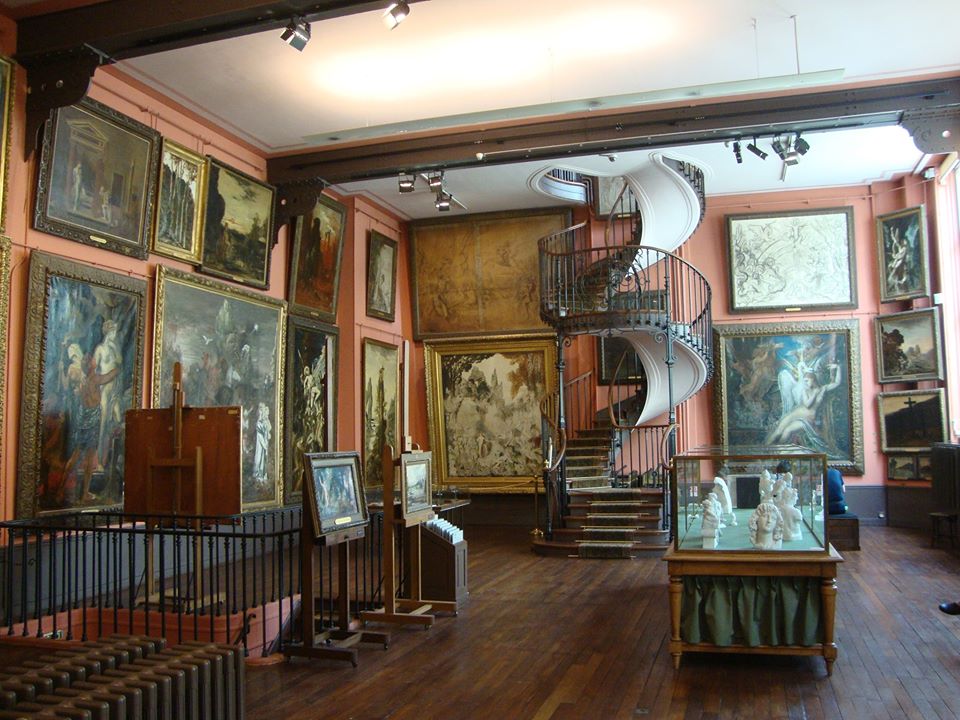This exhibition threw me for a loop. The photos and promotional lit for the show simply don’t do justice to the vibrant colors or the tactile sensation that quilting imbues on these portraits. And Ms. Butler’s subtle (yes subtle) color transitions from one shade/value to another are extremely effective, particularly in the faces, as we see the bright light highlights of certain features quietly shift into darker shadow as we move our view across a face.
I wasn’t familiar with Ms. Butler before this show and I am sorry that I hadn’t seen her work before now. She works with textiles and in this show of portraits, primarily quilts. This is an incredibly effective medium for her style of story telling and these portraits certainly do tell a story. We see and hear clear stories about family and community told with a personal warmth and pride that just feels so very very refreshing. And quilts allow her to work with these vivid colors probably more easily than paint and certainly on a larger scale as well. And the quilting technique allows her to build layers of color without having to think out exactly how to lay in that next vibrant color adjacent to the first.
And as I’ve said, the quilting process provides a certain tactile sensation. Far more interesting than painting while being more subtle and reflective than sculpture. And the colors and techniques here are just totally apropos to Ms. Butler’s vision. Simply amazing…this is an unforgettable show.
Now, some background for the Art Institute of Chicago web page: Bisa Butler: Portraits.
Bisa Butler’s portrait quilts vividly capture personal and historical narratives of Black life.
She strategically uses textiles—a traditionally marginalized medium—to interrogate the historical marginalization of her subjects while using scale and subtle detail to convey her subjects’ complex individuality. Together, Butler’s quilts present an expansive view of history through their engagement with themes such as family, community, migration, the promise of youth, and artistic and intellectual legacies.
and again here is the link to the AIC…this includes a six minute interview with Bisa Butler…more than worth those few minutes! And now, after telling you that the photos that I’ve seen don’t do justice to the physical works, I am going to share three of my favorite pieces from the show!
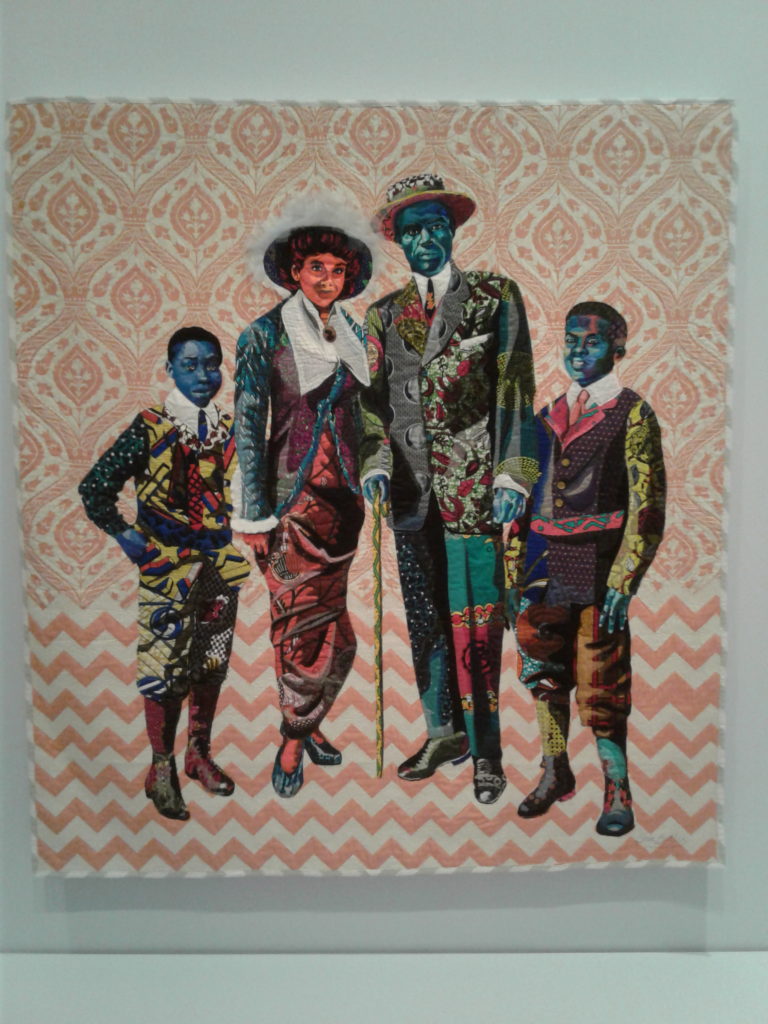
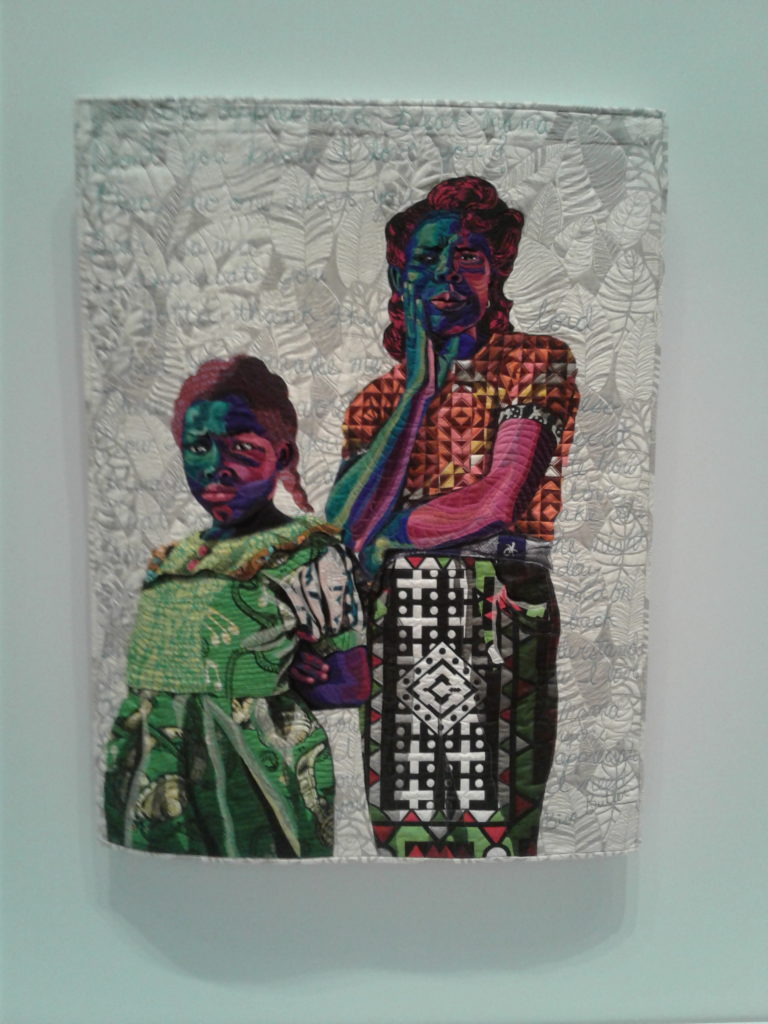
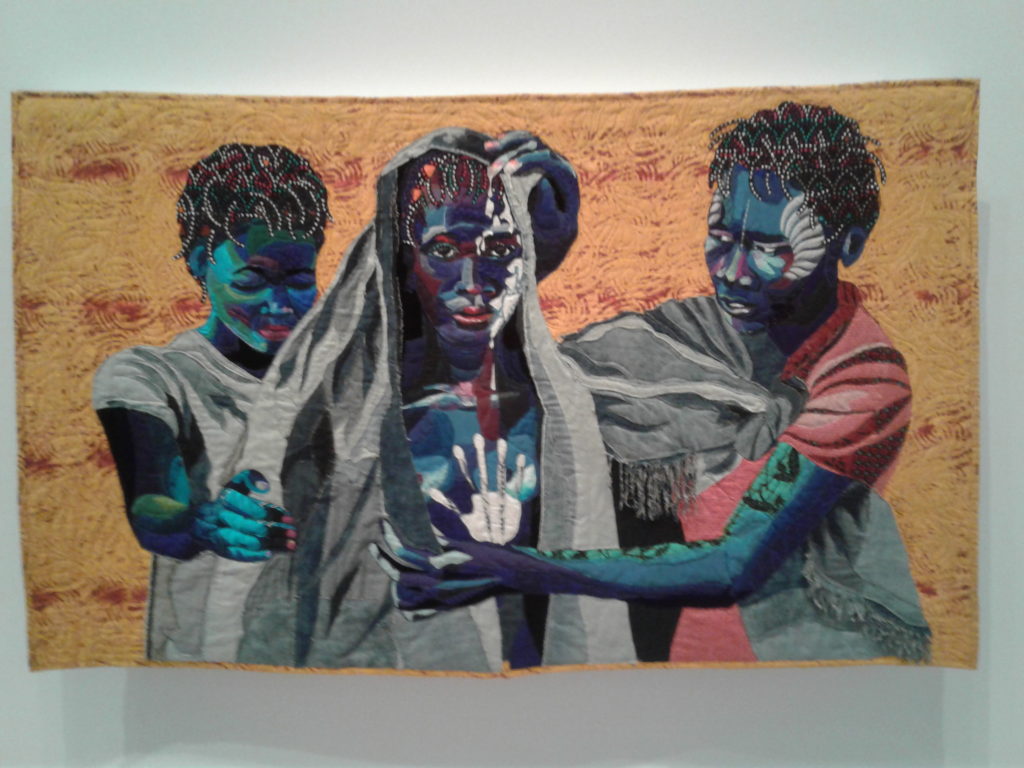
Bia Butler states that her major influences are family photo albums, the philosophies of AfriCOBRA (the African Commune of Bad Relevant Artists), Romare Bearden’s collages, Faith Ringgold’s quilts, and Gordon Parks’s photographs. And although they may not be direct influences, to my eyes there is a similarity in the use of background ‘textures’ to another contemporary artist, Kehinde Wiley, who painted President Obama’s portrait, and even Jacob Lawrence, who is best known for his migration series. I have examples of each below.
The Bisa Butler: Portraits show continues at the Art Institute until September 6, 2021. It is free with general admission to the museum. Currently the AIC is open limited hours, 11 AM to 6 PM Thursday through Monday with early openings each day at 10 AM for members. As of this writing, masks are required and social distancing enforced as best as they can. So I highly recommend seeing this show!!
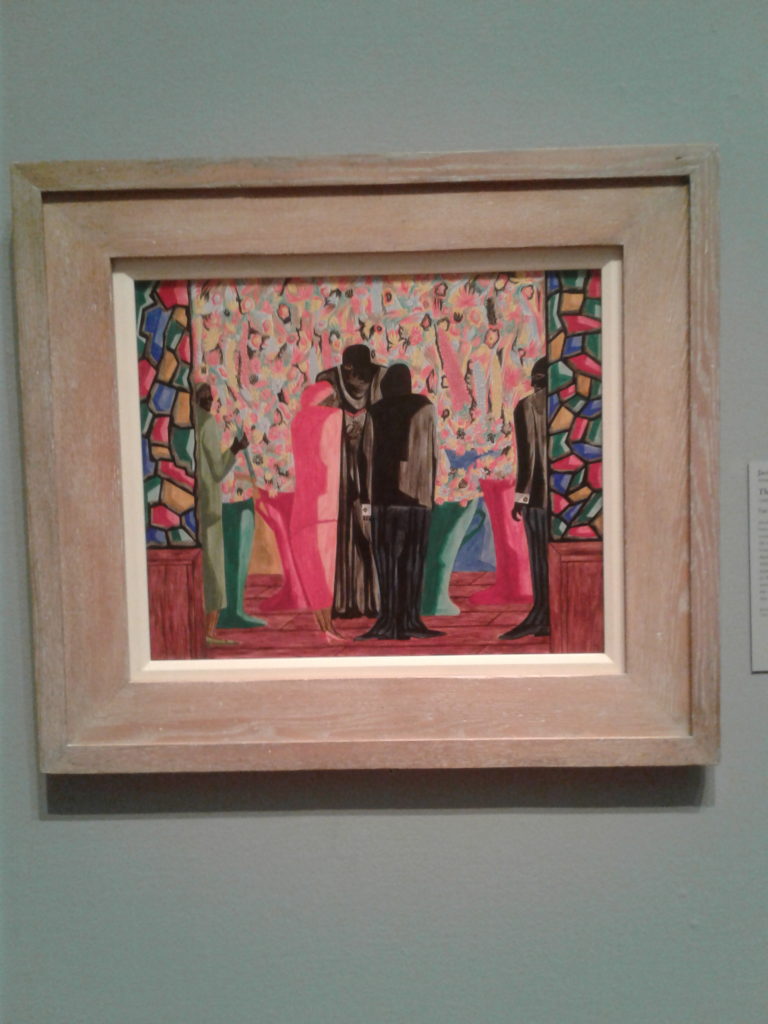
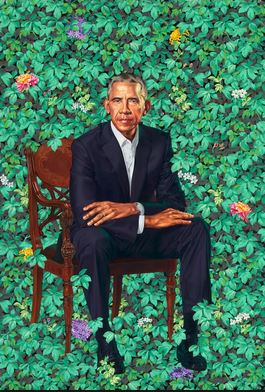
photos of Bia Butler quilts taken at the Art Institute of Chicago by Ed Heinzelman
